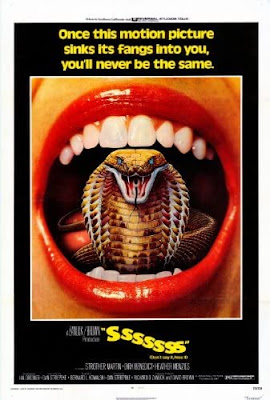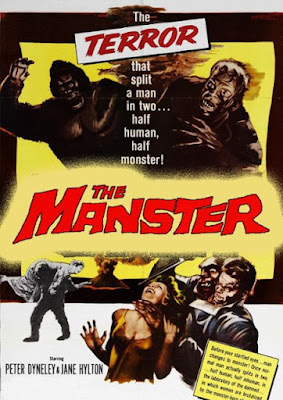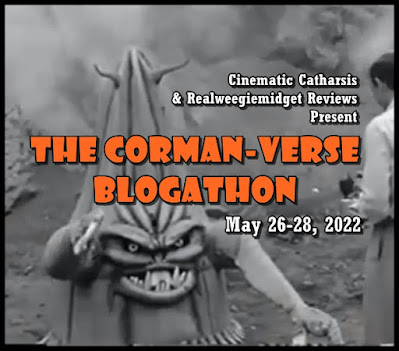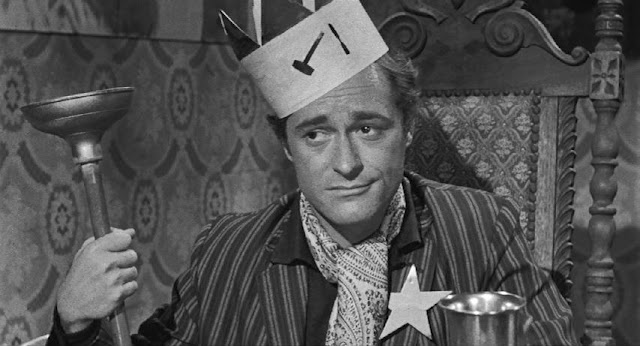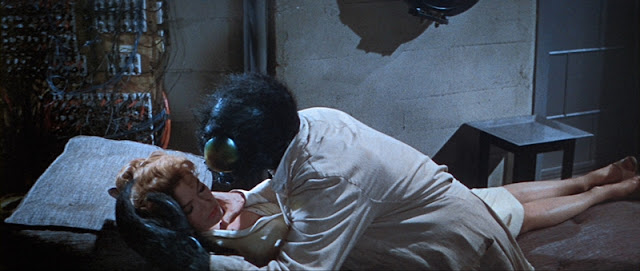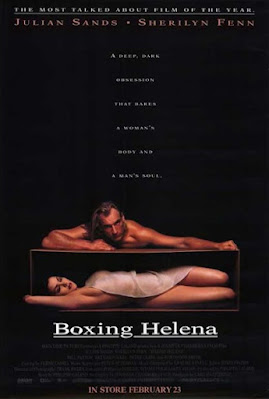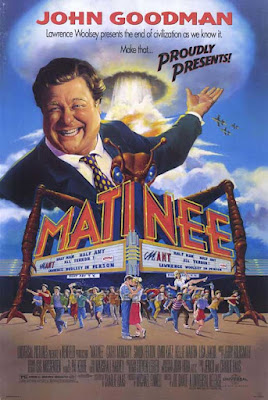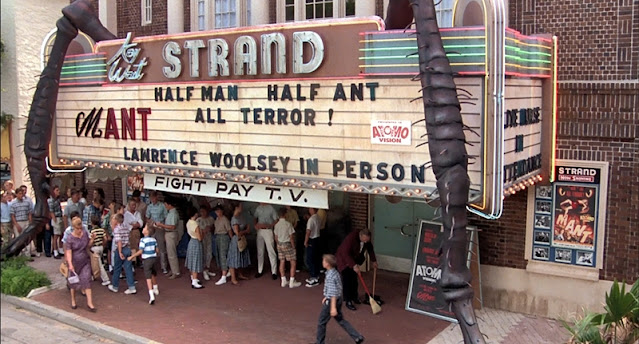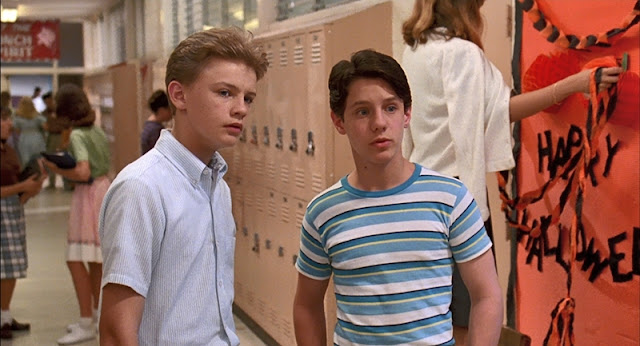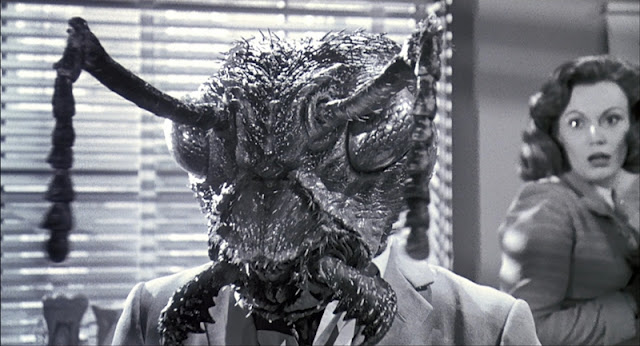Taxidermia (2006) Director/co-writer György Pálfi’s fascinatingly grotesque film consists of a trio of interwoven stories (based on short stories by Lajos Parti Nagy), covering three generations (1942, 1960s, and presumably the 1980s) of a Hungarian family. In the first segment, a sexually frustrated soldier indulges in his perverse fantasies. The second concerns a fictional Eastern Bloc eating contest, while the third involves a skinny taxidermist (Marc Bischoff) and his beyond-morbidly obese father (Gábor Máté). Pálfi juxtaposes some truly stomach-turning imagery with visual poetry, adding up to an unforgettable viewing experience. It’s a mixture decidedly not for everyone, but if you’re that certain someone who appreciates the repugnant with the sublime, this might just be precisely what you’re looking for.
Rating: ****. Available on DVD
Titane (2021) This audacious, unsettling movie by filmmaker Julia Ducournau makes her one to watch. Alexia (Agathe Rousselle), an exotic dancer with a titanium plate in her skull, has intercourse with a car (No, really!). She subsequently becomes pregnant, but there’s much, much more to the story, full of twists and turns that I wouldn’t dare spoil here. I’m not going to venture an explanation about what it all means, and I can’t exactly say I enjoyed it, but I can’t help but admire Titane’s unflinching commitment to its absurd premise, melding flesh and metal.
Rating: ***½. Available on Blu-ray, DVD and Hulu
Sssssss (1973) Strother Martin plays, Carl Stoner a herpetologist shunned by the scientific community because of his unorthodox theories. He hires David Blake (Dirk Benedict, of Battlestar Galactica and A Team fame), a naïve young college student as his assistant. Soon, he becomes Stoner’s unwitting pawn in an experiment to transform man into a king cobra. Complications ensue when the mad doctor’s comely daughter Kristina (Heather Menzies-Urich) falls for David. None of the proceedings in this batty flick make a lick of sense (It’s never explained why Stoner keeps the cobra’s mortal enemy, a mongoose, on the premises, except perhaps to justify the climactic battle), but it’s strangely entertaining, thanks to a committed cast and some cool makeup effects.
Rating: ***.
Available on Blu-ray and DVD
The Manster (aka: The Split) (1959) Some men could be accused of being led around by their “other” head (amiright?), but I’d wager no one’s expecting to take that literally. Larry Stanford (Peter Dyneley), an American journalist working in Japan, meets mad scientist Dr. Suzuki (Tetsu Nakamura), and soon becomes a test subject. After the doctor injects him with an experimental serum, Larry suddenly sprouts another noggin, and his baser instincts take hold. He forgets his wife Linda (Jane Hylton), starting an affair with the scientist’s lascivious assistant, Tara (Terri Zimmern). By the end of The Manster, the only thing that Dr. Suzuki’s experiment proves is that two heads are certainly not better than one. Don’t be surprised if you find yourself scratching your own coconut over the dubious science and the wacky climax.
Rating: ***.
Available on Blu-ray and DVD
Antiviral (2012) Filmmaker Brandon Cronenberg’s commentary on the cannibalistic nature of celebrity worship brings up some intriguing concepts, and the labyrinthine plot wouldn’t be out of place in a film noir. It’s too bad that it suffers from a wooden lead (Caleb Landry Jones) who mumbles most of his lines and a cast of unrelatable characters. I suppose the art design (where white walls predominate) was intended to convey an austere, clinical look, but without the benefit of contrasts from set to set, the overall impact is numbing. The net effect is an intellectually stimulating, yet emotionally uninvolving experience.
Rating: ***.
Available on Blu-ray and DVD
Exte: Hair Extensions (2007) Director/co-writer Sion Sono dips his foot in the body horror sub-genre, with this fractured fable about human foibles and stolen follicles. A mysterious shipping container yields a bizarre and gruesome discovery when officials find it filled with hair and bodies. A lonely dock guard with a hair fetish (Ren Osugi) takes one of the corpses (which might or might not be alive) home, to harvest its continually sprouting locks. Meanwhile, Yuki (Megumi Satô), a young hair stylist, contends with her irresponsible older sister while she balances her job responsibilities. There are some nice moments, featuring creepy imagery, but Sono’s film is all over the board, tonally (from wacky comedy to a drama about child abuse). I wish Sono had picked a lane and stuck with it, but Exte might be worth a look, for curiosity’s sake.
Rating: **½.
Available on DVD
Tusk (2014) An obnoxious podcaster (Justin Long) travels to Canada to cover an internet meme celebrity, only to find a much bigger story, involving an eccentric retired sea captain (Michael Parks) who’s obsessed with walruses. Little does he suspect (Isn’t that always the case) that he’ll soon become a victim of the warped millionaire’s latest experiment. The story at the movie’s core would make a nice half-hour segment in a horror anthology. Unfortunately, Writer/director Kevin Smith fills the other two thirds of the movie with mostly unfunny gags (imagine every Canadian stereotype thrown into the mix) and scenes that go nowhere (mostly involving an uncredited Johnny Depp as a French-Canadian detective). While I can’t recommend this movie in good conscience, it might be worth checking out, if only for the absurdly horrifying scenes of the walrus-human creation (featuring some excellent makeup effects supervised by Robert Kurtzman of KNB Effects).
Rating: **½. Available on Blu-ray, DVD and Kanopy
Contracted (2013) Writer/director Eric England’s cautionary tale starts with an intriguing premise, but falters after it leaves the starting gate. After being manipulated into an ill-advised one-night stand, a young woman discovers a strange disease spreading rapidly throughout her body. She soon finds herself falling apart, while she gradually alienates herself from everyone. Unfortunately, Contracted is hampered by unconvincing performances and situations. Even when she undergoes some very conspicuous (and icky) changes, no one seems overly concerned. Even her doctor, completely at a loss about her illness, doesn’t seem particularly alarmed (I’m not an MD, but I’d probably contact the CDC or refer her to a hospital). Instead, everyone thinks she’s being annoying, hooked on drugs, or making things up. There was a great opportunity for social commentary, but it’s a hard pill to swallow when it’s so clumsily executed.
Rating: **.
Available on Blu-ray and DVD



